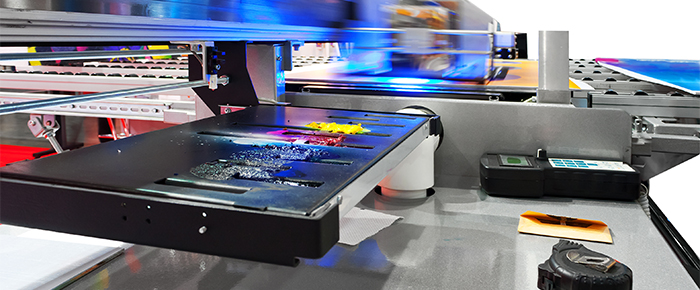
It’s recommended to use thermal-transfer printing methods for applications that require immersion in harsh solvents or extreme temperatures. Thermal-transfer printouts are also more stable when exposed to UV light, especially compared with inkjet printouts. Light stability refers to whether a type of ink relies on pigments or dyes. Pigments, which are found in the resin of thermal-transfer ribbons, and dyes, which are used in inkjet cartridges, are both substances used to provide color to various materials, but they do so in different ways and exhibit different properties, including how they respond to UV light. Pigments tend to fade less in UV light compared to dyes for several reasons.
Light absorption
Pigments: Solid, finely ground particles that are insoluble in the medium used. They work by absorbing and reflecting specific wavelengths of light. Pigments primarily absorb light in the visible spectrum, not in the UV range. This makes them more stable when exposed to UV light, as they do not readily absorb UV radiation.
Dyes: Soluble substances that are molecularly dispersed in a medium and function by forming chemical bonds with the material they color. Many dyes are susceptible to damage by UV radiation because they can absorb UV light, causing them to break down or fade over time.
Chemical structure
Pigments: Relatively inert in chemical structure, which makes them less reactive to UV radiation. They are essentially mineral particles or organic molecules that do not undergo significant chemical changes when exposed to UV light.
Dyes: Often contain chromophores (color-bearing groups) with chemical structures that can be sensitive to UV light. UV exposure can lead to photodegradation of the dye molecules, causing them to lose their color.
Solubility
Pigments: Insoluble in the medium they are mixed with and remain as solid particles within the material. This insolubility reduces their susceptibility to leaching or migration due to UV exposure.
Dyes: Soluble in their solvents, which means they can potentially leach out when exposed to UV light, leading to fading or color changes in the material.
Thus, pigments tend to be more UV-resistant than dyes due to their physical and chemical properties. Pigments are better suited for applications where long-term color stability under UV exposure is a concern, including materials destined for decontamination in biosafety cabinets. The UV exposure of samples and containers that undergo long-term storage should also be considered, as extended UV exposure will cause even some resistant printouts to fade over time. However, it’s important to note there are variations among different types of pigments and dyes, and some may be more UV-resistant than others.
UV-cured inks
No discussion of UV light absorption and ink is complete without exploring UV-cured inks. These inks are produced by mixing a substrate with oligomers, monomers, pigments, and a photoinitiator. Monomers and oligomers are key components responsible for the ink’s viscosity and adhesion properties. The photoinitiator is a chemical that, when exposed to UV light, initiates the polymerization of the mixture. Ultimately, upon UV exposure, the photoinitiators become energized and trigger crosslinking of the monomers and oligomers, creating a strong, resistant polymer chain. Though not typically used in the lab, it has been applied in applications such as packaging, outdoor signage, and wide-format printing.
LabTAG by GA International is a leading manufacturer of high-performance specialty labels and a supplier of identification solutions used in research and medical labs as well as healthcare institutions.



